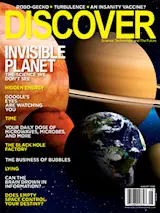Chicago The winter curse of deep snowfalls in Chicago is due to its location on the shores of Lake Michigan. When winds from the north or northeast bring cold Arctic air over the relatively warm water above the lake, the incoming air is heated and picks up moisture. The air rises and forms clouds filled with snow, which then produce heavy showers downwind of the shore.
The Great Lakes were shaped by ice ages that sent glaciers sweeping over much of the northern hemisphere. Ten thousand to 15,000 years ago, glaciers around a mile high covered the present-day location of the Great Lakes. As the glaciers receded, the lakes formed from melt water.
Houston Houston's economy and popularity got a huge boost in the 1950's for a very practical reason: the advent of air conditioning. Air conditioners typically use chemicals, like Freon, that can be alternately compressed and expanded to absorb heat from a room and dissipate it outside.
Houston is located on the edge of America's Tornado Alley. Most tornadoes form from thunderstorms that get their energy from the clash of cold, dry air from Canada with warm, humid, air from the Gulf of Mexico.
There are over 300 geological faults lying beneath the surface of Houston. While geologists don't see much risk of a major earthquake, the faults often cause damage to infrastructures such as roads and pipes.
Los Angeles That mysteriously non-aging movie star who can't raise her eyebrows anymore may have gotten some Botox injections to smooth out those frown lines between her brows. Botox is made of botulinum toxin, which is found in nature as the deadly product of the food-poisoning bacteria Clostridiumbotulinum. The toxin smoothes wrinkles by blocking the release of neurotransmitter to muscles, preventing them from tensing up.
Those delicious California oranges do a body good. One Valencia orange contains about 60 milligrams of vitamin C, more than half the daily recommended amount. The human body needs vitamin C in order to complete certain biochemical reactions including the synthesis of collagen, an important component of skin and tendons.
Philadelphia Do you like your Philly cheese steaks with "whiz?" Part of the key to this creamy yellow dip are emulsifiers, which help keep all of the ingredients mixed together instead of separating out. In the case of many salad dressings, mustard is the emulsifier that keeps oil and vinegar in happy union.
Seattle Seattle's signature cloudy climate is due to its surrounding geography. About 20 times a year, the flow of air moving west or northwest gets split into two streams by the Olympic Mountains. These streams reconverge and collide over the Puget Sound, creating the Puget Sound Convergence Zone. The colliding air is forced upward, creating clouds—and storms.
Seattle has a reputation for being a rainy city. But while it is cloudy, it actually gets less rain per year than New York City—just 38 inches. Part of the reason is because when water-laden air from the Pacific reaches the Olympic Mountains it rises, cooling and losing moisture before reaching Seattle.
The Space Needle has served as the symbol of Seattle since 1962. It is designed to with stand 200 mile-per-hour wind and a massive earthquake measuring 9.5 on the Richter scale. It owes its extraordinary stability in large part to the factthat despite its height of 605 feet, its center of gravity is just five feet above the ground, making it tough to topple.
For more information please read What Invisible Things Are in the Surfaces You Touch and Air You Breathe?.














